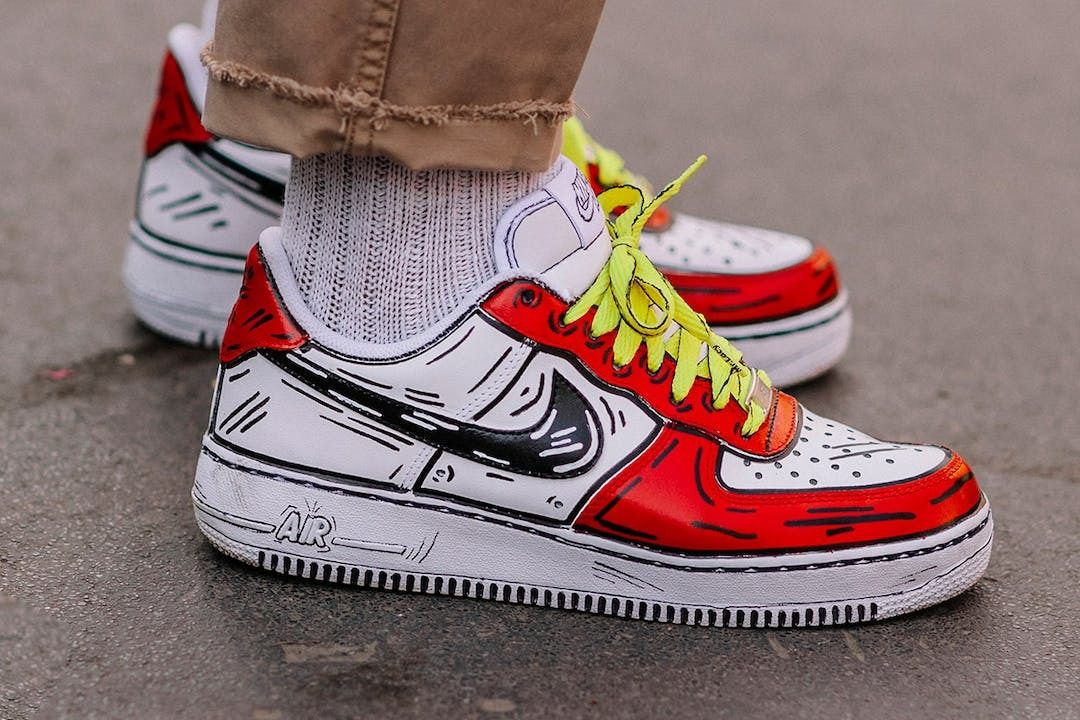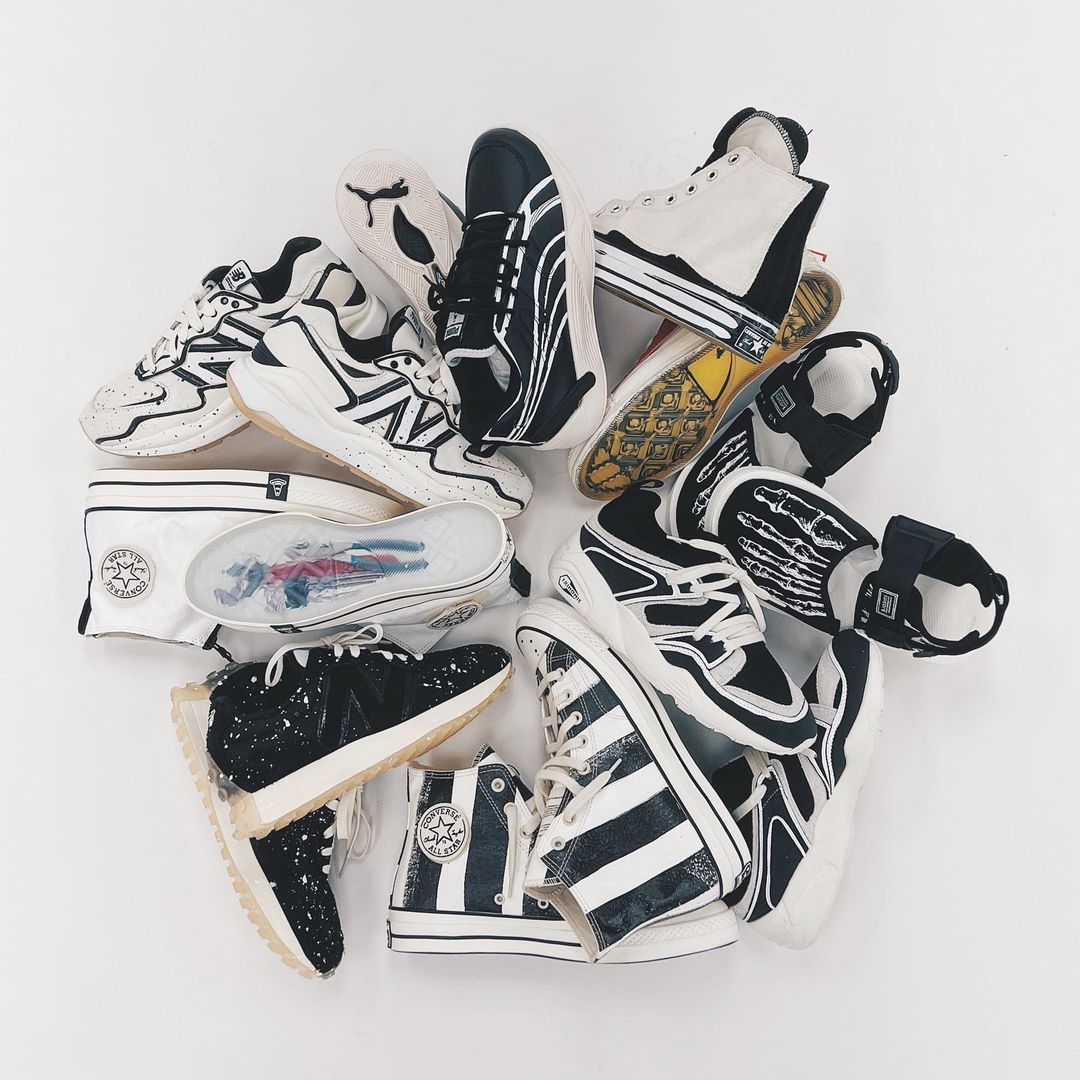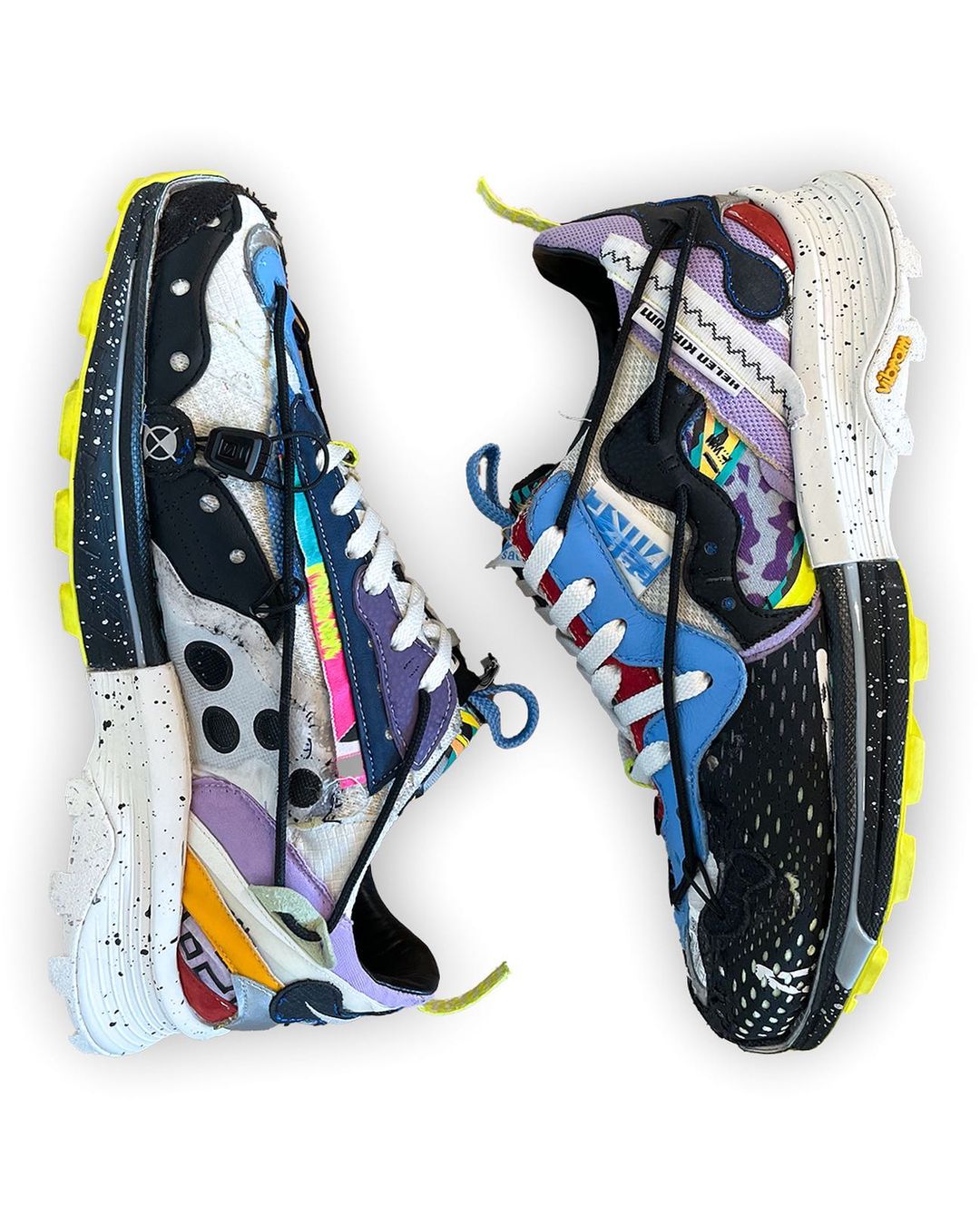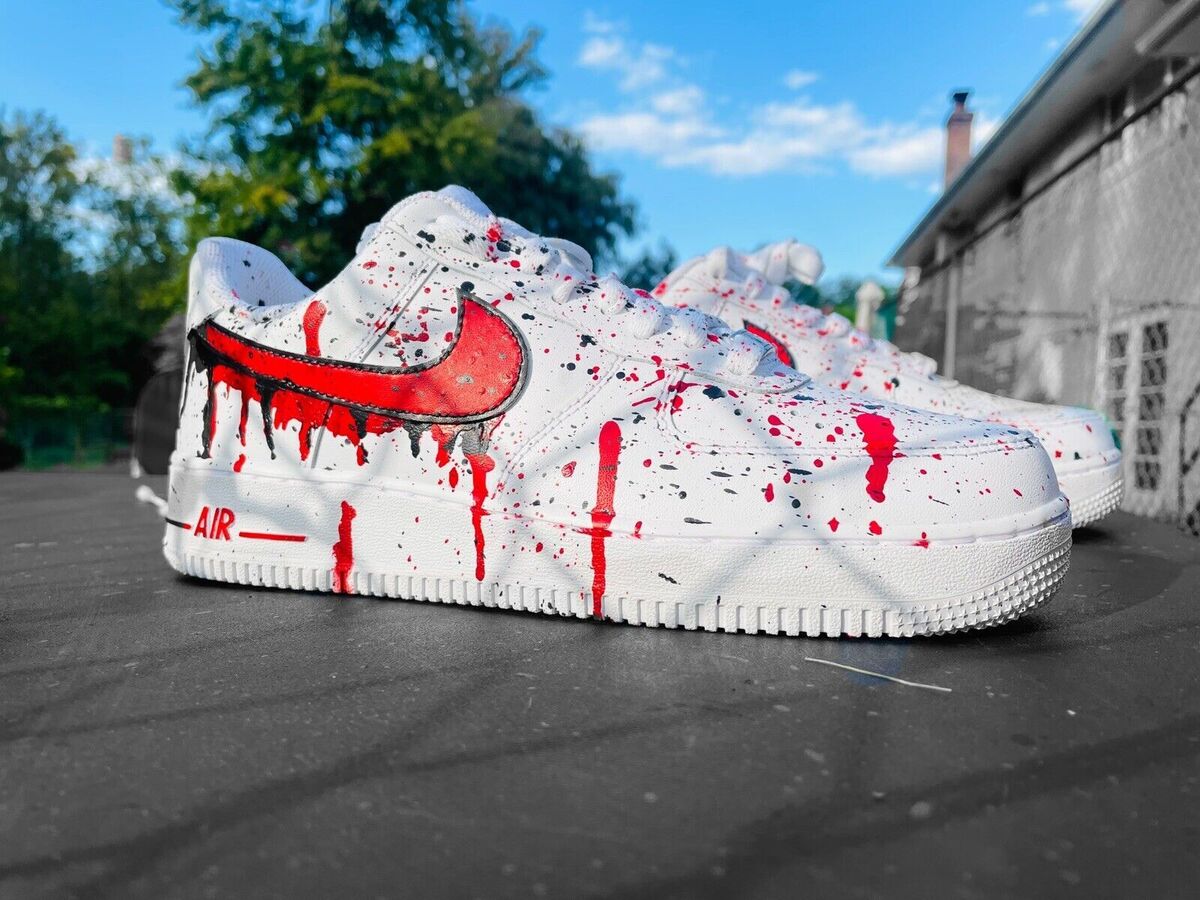
Custom shoes and the reality of copying ideas

The sneaker customization trend has never been bigger. The sense of exclusivity of a one-of-a-kind item is appealing to everyone. In the sneaker scene, what was once a mere hobby has turned into a real market. From kids doodling on their Chuck Taylors to skateboarders cutting off the top halves of their Vans Caballeros. The trend of customizing shoes is as old as sneakers themselves. In the late 90s and early 2000s, sneakerheads began designing their own variations of their favorite sneakers and selling them on the market.
Table of content
History of custom sneakers
One of the first to do this was Bobbito Garcia. A cultural pioneer of the 80s and 90s, Garcia painted various designs onto Bruce Kilgore’s iconic Air Force 1 Swoosh and sold them. There were also Methamphibian and SBTG, who made a name for themselves by hand-painting Nike Dunks and reselling them for high prices.
Raif Adelberg cut up Nike Air Force 1s and brought his creations to Eddie Cruz to sell at Union LA in the early 2000s.
A few years later, JBF used luxury materials to customize shoes. While Shoe Surgeon became known for creating some of the most elaborate custom shoe creations on the market. Today, the trend has flooded the market as consumers want more opportunities to differentiate themselves.
The reality of copying custom shoe ideas
While there are plenty of custom shoes that are unique in their own right, the idea has become a bit of a cliché due to the sheer number of copycats. That’s why JBF Custom has refused to produce any more python Air Jordan 1s. Instead of focusing on their contribution to sneaker culture, some custom shoe makers are just profit-driven and try to cash in on their copied creations.

“The custom footwear market is saturated,” says Connor Seltz of Ceeze Studios. “But I still believe there is a huge gap for creativity. Unique thinkers in the market. There is a tension between creativity and commercialism.”
Joshua Vides - Shoe customiser known for his unique designs
Of course, there are trends that still hold true to their roots in sneaker culture. Joshua Vides is known for his edgy designs. The Guatemalan artist never considered himself a sneaker custom artist. He was simply a lover of shoes who realized he could use them as a canvas for art.
After his creations went viral, Vides signed an official collaboration with Converse under his banner. Other trends like Online Ceramics x Nike Air Presto’s Off-White Tie-Dyed for John Mayer or The Shoe Surgeon’s meticulously crafted Nike React Element 87 “Leather” have elevated some of 2018’s most hyped releases with uniqueness and personalization.

Helen Kirkum - A prominent name in the custom shoe culture
Helen Kirkum, another name in the sneaker custom scene, also made an impression with her take on Reebok’s InstaPump Fury OG. Kirkum had the freedom to experiment with the shoe whenever she felt like it. It’s in this freedom that Kirkum is able to share her views on sustainability through the reuse of materials.
As she puts it, “If I put too much value on the shoe, I’d never be able to take a scalpel and cut it in half.” “I can understand the importance of sneakers. But I think, when it comes to my work, I have to allow myself to forget about that and just go with it naturally.”

What is a beautiful custom shoe?
The best custom sneakers, however, are those that tell a story and retain personal meaning. For example, BespokeIND’s Nike SB Dunk Low “Lego” features a mix of calfskin, kangaroo, lambskin, and deerskin in muted tones reminiscent of the brand, and real Lego pieces embedded in the tongue.

According to Damian Sim, founder of BespokeIND: “Each pair of sneakers we handcraft takes on average over 100 hours to complete. From the digital rendering stage to the final product. We incorporate sneaker intelligence into all of our processes. Take the OG shape, cut and sew or prototype and make to order. This is the real difference between what BespokeIND does and what consumers are doing with deconstructing and cutting shoes or adding premium materials.”
Conclusion
Despite the proliferation of copycat custom designs, custom sneakers remain a vital part of the sneaker industry. They inspire brands and individuals to continue to innovate. Whether it’s a unique piece of artwork, a unique design process, or an attempt to tell a compelling story, it’s a safe bet that standout custom designs will continue to flood the market. Unfortunately, as the number of custom sneakers begins to increase, so too will the number of copycats.
As consumers, it’s our responsibility to separate the good from the bad to maintain the integrity of our community.










Laisser un commentaire
Ce site est protégé par hCaptcha, et la Politique de confidentialité et les Conditions de service de hCaptcha s’appliquent.